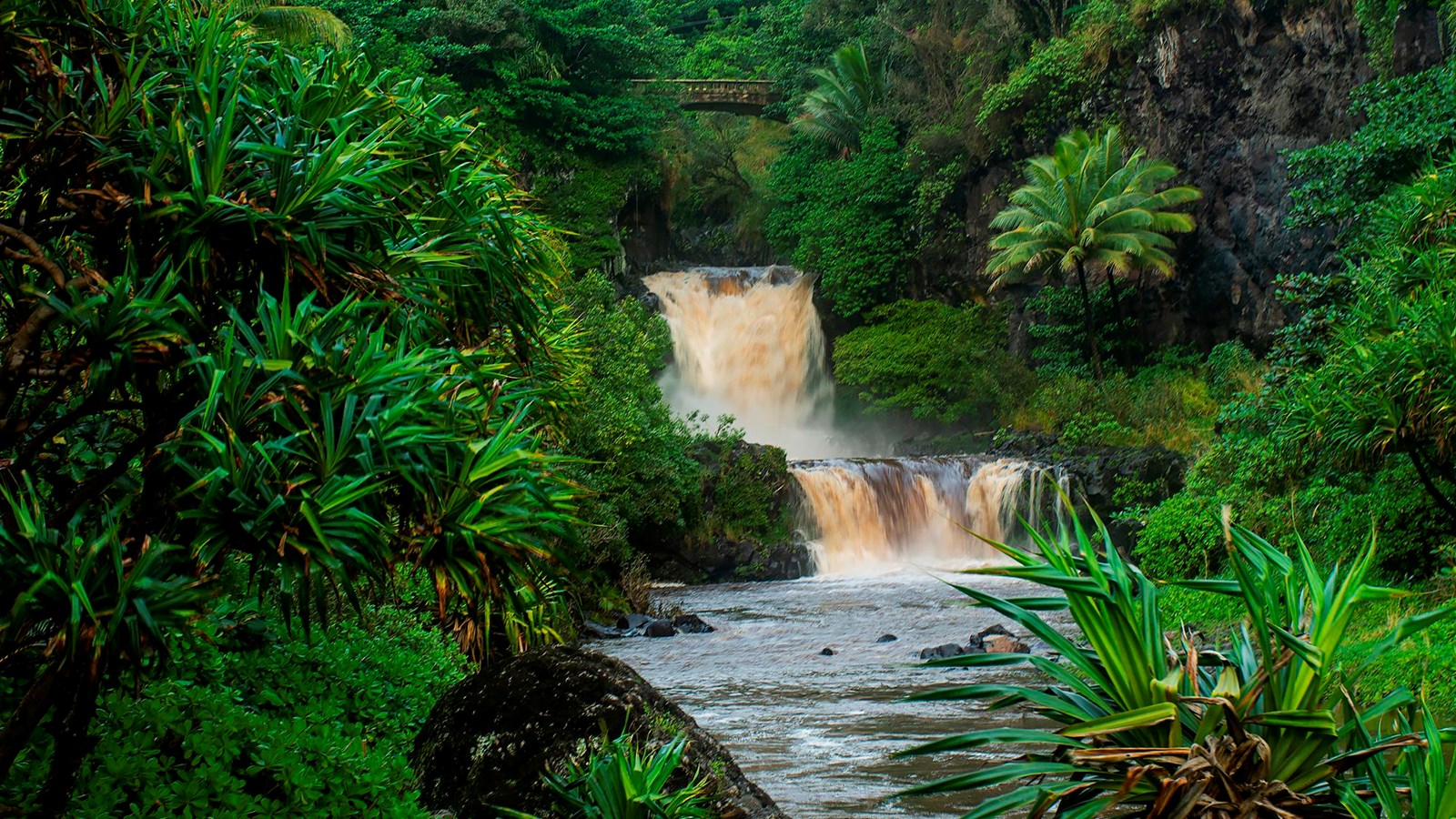Last updated: March 27, 2022
Place
Kūloa Point View

NPS Photo
Quick Facts
Location:
Kipahulu
Significance:
Guided Hike
Take a moment to appreciate this scenery. Look across the Alenuihāhā Channel. On a clear day, we can see Hawai’i Island, 30 miles away. Enjoy the rhythmic wonder of wave after wave coming in to crash ashore below these ancient volcanic cliffs. Look up to the mountains behind you and see the waterfalls and cascades of the Palikea Stream flowing through ‘Oheʻo Gulch and into the Pacific Ocean. Reflect on the the things we’ve discovered on our journey to this spot, Kūloa Point.
Along this path we enjoyed a peaceful walk and breathtaking scenery. We encoutered up close much of the heritage of Maui. We saw the hale hālāwai and learned about the purpose of traditional buildings that Kīpahulu was once a sprawling village full of activity. We also saw how this landscape has changed since the time Maui was contacted by the outside world. New immigrants brought with them many of the plants we noticed along the way. We stopped in a hala grove and learned of the park’s kuleana (responsibility) to protect the plants native to Hawaiian culture. We also saw a real hale noa and the fishing shrines used by people who lived here.
Here at Kūloa Point, all of these themes run together. This is the homeland to thousands of ‘ohana (families) that can trace their moʻo kūʻauhau (geneology) to this part of Maui. Here, their ancestors fished these waters, built their hale, irrigated their crops, and taught their children and grandchildren to practice mālāma ʻāina (caring for the land). Their voices are still heard in the sounds of the landscape: the rushing waters, the crashing waves, and the wind through the lau hala. The message these kūpuna (ancestors) want us to take from this experience is to mālāma ʻāina wherever we call home, as well as wherever we visit.
Mahalo for joining us on this tour today, and we hope you enjoy the rest of your time in Haleakalā National Park.
Along this path we enjoyed a peaceful walk and breathtaking scenery. We encoutered up close much of the heritage of Maui. We saw the hale hālāwai and learned about the purpose of traditional buildings that Kīpahulu was once a sprawling village full of activity. We also saw how this landscape has changed since the time Maui was contacted by the outside world. New immigrants brought with them many of the plants we noticed along the way. We stopped in a hala grove and learned of the park’s kuleana (responsibility) to protect the plants native to Hawaiian culture. We also saw a real hale noa and the fishing shrines used by people who lived here.
Here at Kūloa Point, all of these themes run together. This is the homeland to thousands of ‘ohana (families) that can trace their moʻo kūʻauhau (geneology) to this part of Maui. Here, their ancestors fished these waters, built their hale, irrigated their crops, and taught their children and grandchildren to practice mālāma ʻāina (caring for the land). Their voices are still heard in the sounds of the landscape: the rushing waters, the crashing waves, and the wind through the lau hala. The message these kūpuna (ancestors) want us to take from this experience is to mālāma ʻāina wherever we call home, as well as wherever we visit.
Mahalo for joining us on this tour today, and we hope you enjoy the rest of your time in Haleakalā National Park.
